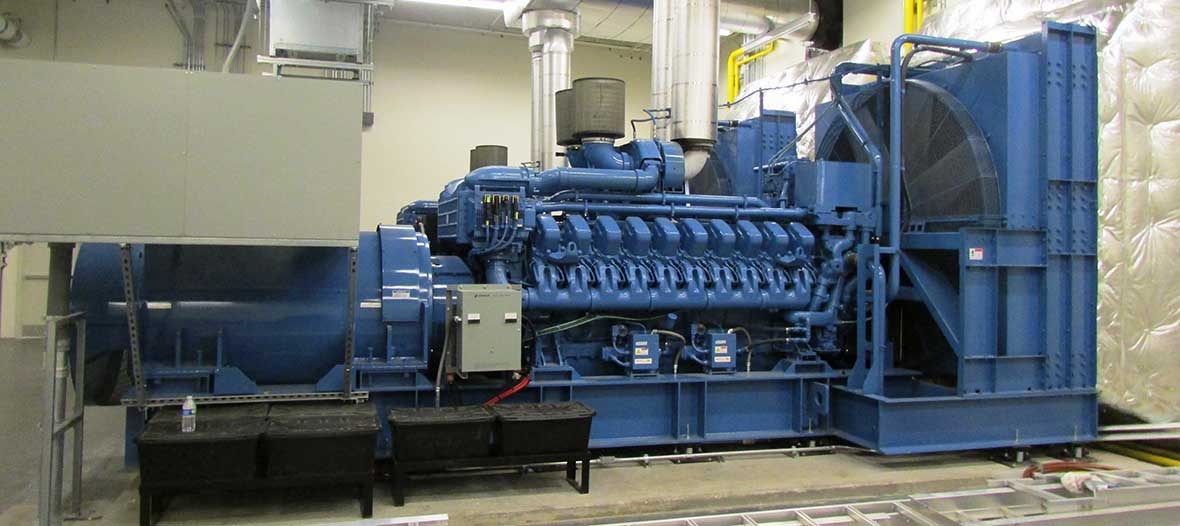
SPCC Plan Consulting Services Commercial Standby Generators
What is an SPCC Plan for Standby Generators?
Stand-by Generators have become a necessity for most commercial buildings, hospitals, hotels, industrial firms and data centers. These generators are powered by either diesel fuel or natural gas. The EPA Clean Water Act requires that any facility that has above ground oil products (diesel fuel) storage capacities of 1,320 gallons or more must develop and implement a Spill Prevention, Control and Countermeasure (SPCC) plan in accordance with 40 CFR Part 112. There are three forms of these plans: Tier I, Tier II and Professional Engineer Certified. Tier I & II are applicable to facilities with less than 10,000 gallons of diesel oil storage tanks. Facilities that exceed this volume must adapt a Professional Engineered Certified Plan. In addition to the Federal EPA, most states, local municipalities and financial and insurance companies now require a compliant SPCC Plan.
SPCC compliance requires that approved secondary containment must be in place to prevent any oil spillage sheen from reaching waterways, either by near-by storm drains, ditches, streams, rivers, or canals, etc. The containment may be in the form of double-walled self-contained tanks, single wall with constructed impervious containment sized to contain 110% of the total capacity, or in certain application such as loading areas, active containment such as spill booms, absorbents, etc.
Fuel Storage tanks for stand-by generators may be in the form of the following vessels:
- Large Diesel storage tanks (Usually several thousand gallons capacity located outside)
- Sub-base tanks (The generator is installed above the double-walled tank base)
- Day tanks (Tanks usually located adjacent to the generator containing a day’s quantity of fuel immediately available for starting and running the generator.
SPCC Regulations
A properly compliant SPCC plan will involve a site evaluation visit and cover all applicable regulations including a detailed discussion of the following:
- A explanation of all oil product vessels of 55 gallons or more.
- Secondary containment description and calculations. This containment may be in the form of passive such as double walled vessels, constructed walls capable of holding the quantity of the largest vessel plus 10% if outdoors until cleanup and disposal can be accomplished.
- Storage tank integrity test compliance directives
- Topographical Maps showing distance to any waterways, bodies of water or intermittent streams
- Diagram of facility detailing the location of all oil product storage vessels and the primary direction of drainage from the facility
- Specific reference to all applicable EPA regulations
- An Oil Spill Contingency Plan detailing all actions to be taken in the event of a major oil spill
- Employee training directives and applicable records
- Oil storage vessel inspection directives and forms
- Unloading of oil diesel fuel procedures and precautions
Have a Question?
SPCC Plan Expert
Maurice provides the lowest possible costs while maintaining the highest quality and compliance for his services in developing Spill Prevention, Control and Countermeasure (SPCC) Plans in the standby generator industry.
SPCC Plans Are Our Only Business
Spillco has provided several thousand SPCC plans in over 30 states for over 700 clients of various industries during the past 10 years. SPCC plans are our only business. We have contracted Professional Engineers who are knowledgeable of the SPCC requirements and are licensed in over 30 states.
Our experience of writing PE Certified SPCC Plans for Commercial Standby Generators’ applications include major data storage companies, hospitals, manufacturing companies, city municipal buildings, the US Veterans Administration data center, U.S. Coast Guard, Electrical Power Cooperatives, as well as various office buildings. We provide Certified SPCC plans for a fraction of the cost of our competitors. The reason is simple. Due to our experience, we developed systems for applications that do not require our time in researching and constructing a specific plan from the initial stage. The information from a facility is molded into our system for a site specific plan compliant with EPA, state and local applicable regulations.